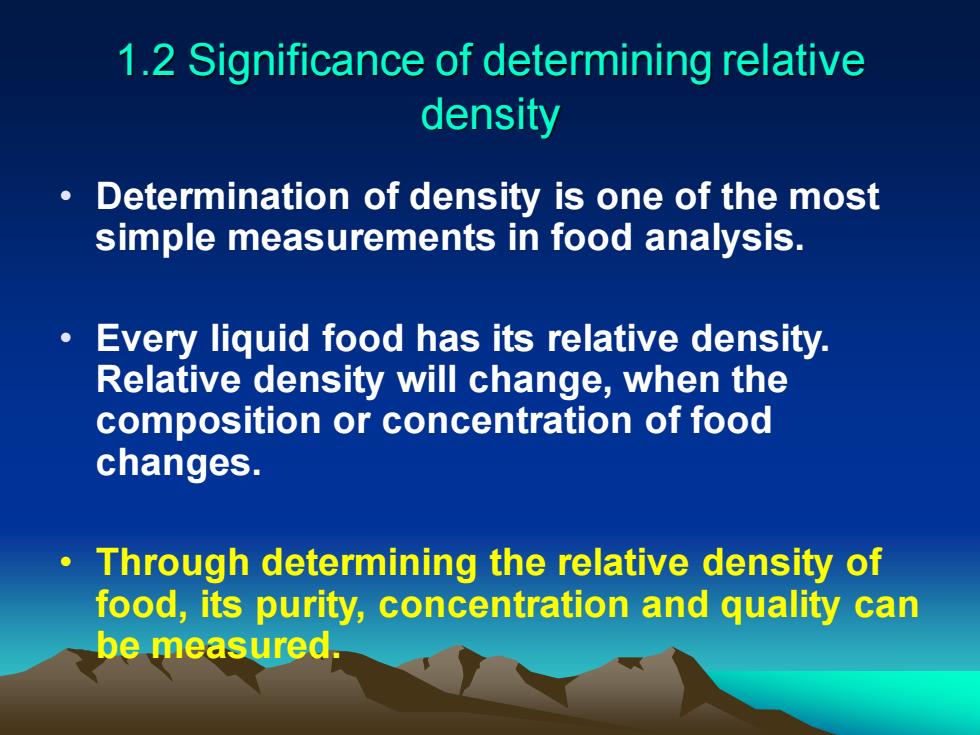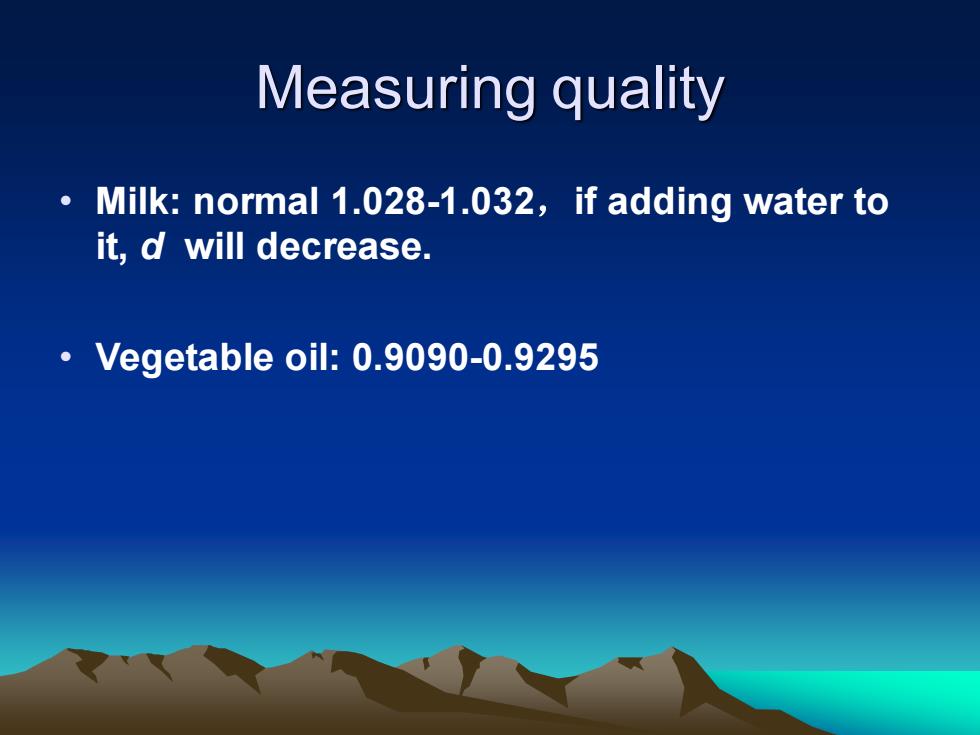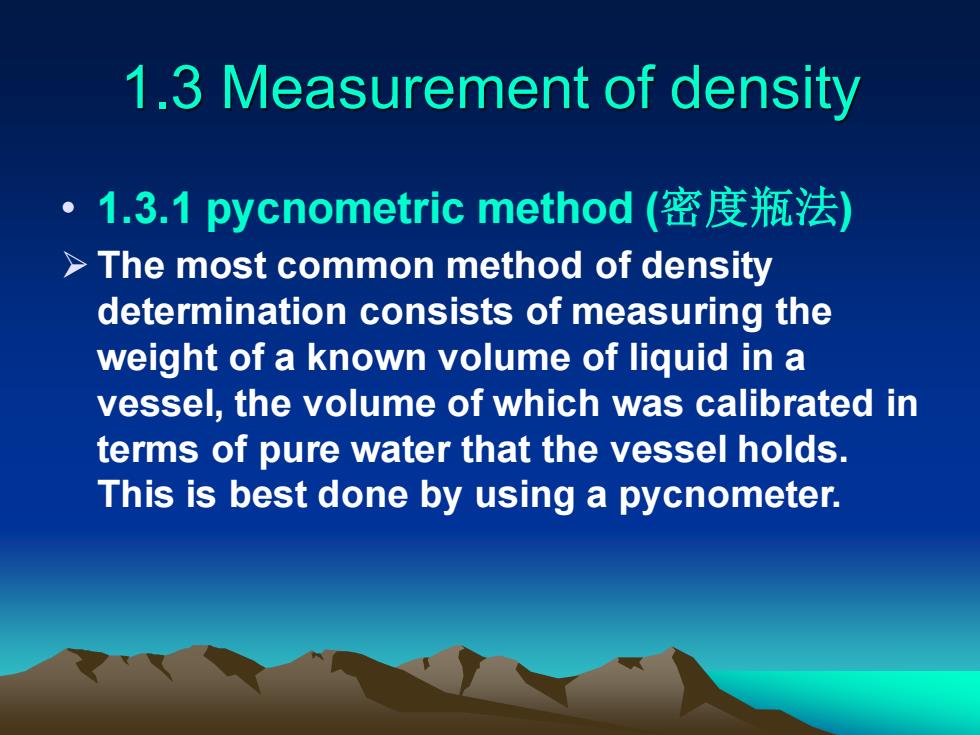
• d20 4 • d20 20 • d20 4= d20 20×0.99823
• d20 4 • d20 20 • d20 4= d20 20×0.99823

1.2 Significance of determining relative density • Determination of density is one of the most simple measurements in food analysis. • Every liquid food has its relative density. Relative density will change, when the composition or concentration of food changes. • Through determining the relative density of food, its purity, concentration and quality can be measured
1.2 Significance of determining relative density • Determination of density is one of the most simple measurements in food analysis. • Every liquid food has its relative density. Relative density will change, when the composition or concentration of food changes. • Through determining the relative density of food, its purity, concentration and quality can be measured

Measuring concentration • Sucrose • Alcohol • Juice: total solids contents
Measuring concentration • Sucrose • Alcohol • Juice: total solids contents

Measuring quality • Milk: normal 1.028-1.032,if adding water to it, d will decrease. • Vegetable oil: 0.9090-0.9295
Measuring quality • Milk: normal 1.028-1.032,if adding water to it, d will decrease. • Vegetable oil: 0.9090-0.9295

1.3 Measurement of density • 1.3.1 pycnometric method (密度瓶法) ➢ The most common method of density determination consists of measuring the weight of a known volume of liquid in a vessel, the volume of which was calibrated in terms of pure water that the vessel holds. This is best done by using a pycnometer
1.3 Measurement of density • 1.3.1 pycnometric method (密度瓶法) ➢ The most common method of density determination consists of measuring the weight of a known volume of liquid in a vessel, the volume of which was calibrated in terms of pure water that the vessel holds. This is best done by using a pycnometer